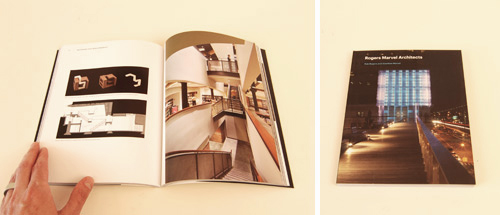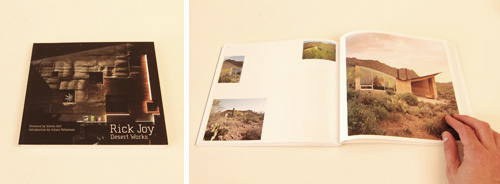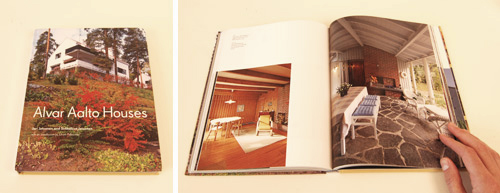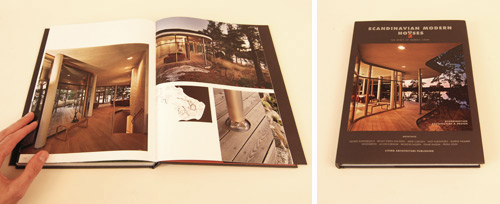
Our book report series covers the design books that inspire and engage us, these are the books that get us up in the morning ready to save the world from ugly. Enjoy…

Dieter Rams: As Little Design as Possible, $90
Phaidon
In the industrial design world, Dieter Rams is the calm in the storm; he is the sage of aesthetics. The tone of the book, as well as the aesthetics, encapsulate his philosophy of purity and simplicity; every gorgeous page is marked with his invisible stamp. With order and eloquence, the book summarizes his early life, carefully reviews his work with Braun and Vitsoe, and allows the reader into Rams’ own private residence. Big, beautiful images demonstrate most of his designs in detail and the book ends with his 10 principles of good design. The content captures the mess too; the reality of working in the shop with hand tools, the volumes of prototypes produced and the inevitable paperwork it all creates; but it is considered mess, designed mess, the kind of mess calculated by a master. The way we see it, there is only one person on the planet fit to deliver the forward, and Jonathan Ive nails it. This book is required reading.

The Modern Impulse, Peter L. Gluck and Partners, $65
ORO Editions
We’re big fans of any book that supplements the finished photos with process, technical drawings and even construction images. Gluck is a master architect, an architect’s architect; the opportunity to review such methodical work is a privilege for most of us; the thoroughness with which this book has been executed speaks volumes about the discipline and purpose of the firm. The photos are clearly shot with trained eyes and the drawings are the kind you build from. The Modern Impulse is the real deal.

Rogers Marvel Architects, $40
Princeton Architectural Press
Not only do these guys (and gals) know how to build, but they’re exactly the type of firm that we like to see adding that next layer of design to the urban fabric. The work is conscientious and forward thinking; that they have a section of the book titled “adaptations” tells us that they’re well ahead of most U.S. firms in terms of design philosophy and innovation. Without being overly precious, the work is special and worth seeking out. At the same time, it’s work that gets used in the world, it matters.

Rick Joy, Desert Works, $40
Princeton Architectural Press
About halfway into this book, there is a serious danger of buying plane tickets to the southwest. Rick Joy’s work does such an extraordinary job creating a sense of place, that there is an undeniable urge to feel, smell and listen to the work. The aridness of the land is embodied in each of the projects and it’s tempting to put yourself in the photos; watching the sun come up through the clear skies and washing over the concrete walls. With a handful of simple homes, Rick Joy has grasped the qualities that elude most architects for their entire careers. In essence, he has created an architecture that belongs.

Sverre Fehn, The Pattern of Thoughts by Per Olaf Fjeld, $70
The Monacelli Press
The degree to which Sverre Fehn experimented with architecture has always impressed us, particularly since the final product always retains that warm modernism so familiar to Scandinavian design. Concrete, glass, and steel -this is not a kit of parts typical of comforting places, let alone cozy ones; and yet Sverre Fehn achieved these qualities. He not only tests the properties of material, but also the social and psychological implications of architecture. The book follows the thread of his work and reveals an architect who truly had a command of the language of form and place. Rough sketches and line drawings help the reader bridge the gap between the mind’s eye and a portfolio of exceptional work.

Alvar Aalto Houses by Jari Jetsonen and Sirkkaliisa Jetsonen, $50
Princeton Architectural Press
Alvar Aalto was a master at creating homes for living. Not showpieces for photographs or private little museums for the wealthy but, rather, significant places for the nature of living. The photographs in this book are handsomely composed with the things of daily life; a flower filled vase on the table, crackling flames in the fireplace and shelves lined with worn books. A deliberate warmth is present in each image and the covered terraces suggest that maybe you should sit a while and enjoy the view. There is authenticity and wisdom in these pages; this book is a quiet teacher. If you’re design conscious, this book belongs on your shelf.

Jorn Utzon Houses by Henrik Sten Moller & Vibe Udsen, $80
Living Architecture Publishing
Despite the title, Jorn Utzon Houses covers a spectrum of projects ranging in scale from the intimacy of a single family home to the stateliness of a national assembly hall (and yes, the Sydney Opera House). Throughout the diversity of projects though, a simple thesis is at work; that each of these projects is a “house” in its own way. It is this inclusive philosophy that allows the forms, no matter how grand, to grasp a human scale. By doing so, each project develops the qualities most reassuring to people: shelter, coherent forms, natural light, spiritual expression… Whether it is a place of celebration or quiet contemplation, the human is at the center of the design; each situation becomes sacred.

Scandinavian Modern Houses 2, $85
Living Architecture Publishing
Part one of this series may very well be the most referenced book in our office. So when the second of the series was recently published, we were giddy with excitement. Part 2 didn’t let us down; it is filled with exceptional homes designed by master architects for people who live purposeful lives. It’s all there; the DNA of good design is embedded within 200+ pages and the design wisdom is plentiful. The ideas in this book are profound, the designs careful, and the details serendipitous. This is a book to savor; this is a book to hunker down with, along with your favorite drink, and relish.

New York, A Photographic Album, edited by Gabriela Kogan, $17.95
Universe
This inspiring little book consists of all those photos we wished we’d taken in NYC but never did. It’s a poetic reminder of what makes Manhattan so remarkable and anyone drawn to the visual image or the hustle of the big city will have a difficult time putting it down. Every photo is significant in its own right and their assembly illustrates the depth, emotion and power of our favorite city on the planet.
A QUICK NOTE: We adamantly support local bookshops and are loyal supporters of urbanism and community. We encourage you to vote with your money and support exceptional book stores like Peter Miller Books in Seattle, William Stout Architectural Books in San Francisco, Powell’s Books in Portland and many more around the country that foster culture and community.
A QUICK DISCLAIMER: We don’t read all of these books from cover to cover -as we’re very busy designing and building things most days. Our reviews are based on a variety of aspects such as how we use the books in our office and how often they end up open on our desks (as opposed to passively sitting on the bookshelf). The reviews are often based on skimming the books or mining them for specific information. We’re not professional writers or book reviewers; we’re just architects that can’t stop talking about architecture. If you’d like to send us your book for review, you can contact us for further information.





